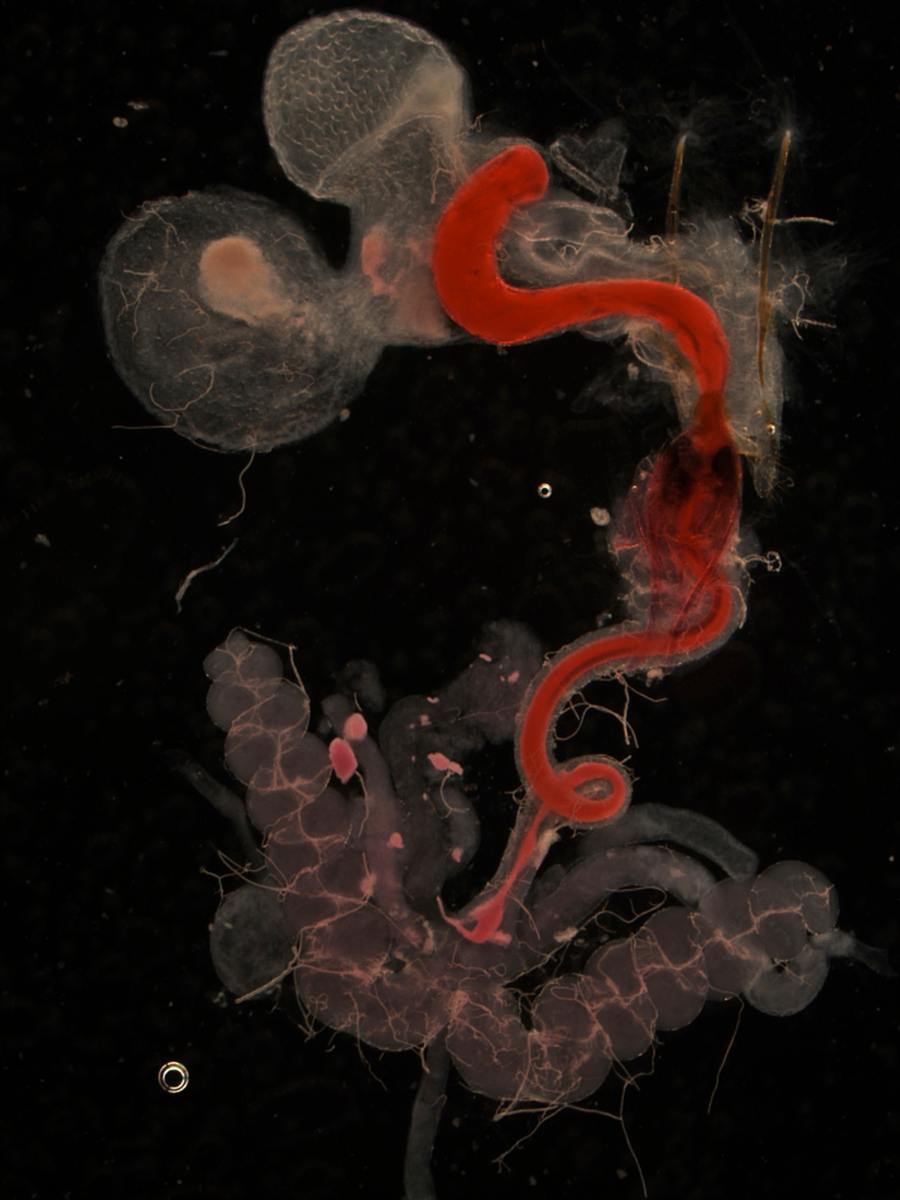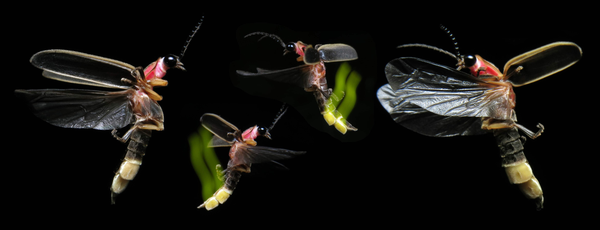Excerpted from Silent Sparks: The Wondrous World of Fireflies by Sara Lewis. Copyright © 2016 by Sara Lewis. With permission of the publisher, Princeton University Press. All Rights Reserved.
People often ask how I first got started with fireflies. Surprisingly, I don’t have many childhood recollections of chasing or collecting fireflies. It wasn’t until I started my postdoctoral fellowship at Harvard that I began to really think seriously about studying fireflies. Why fireflies? Their visible, easy-to-decipher courtship signals and brief adult lives were a perfect match for my growing interest in the evolutionary game of sexual selection. As I’ve expanded my firefly studies over the past thirty years at Tufts University, I’ve been lucky to have many talented and hard-working students join my research team. Armed with their enthusiasm, insight, and curiosity, these bright young scientists-in-training have endured violent thunderstorms, voracious mosquitoes, and skunks, ticks, and poison ivy—all for the sake of better understanding firefly sex and evolution.
I vividly recall my first glimpse into the hitherto-hidden world of firefly innards. Sunlight was streaming through tall windows in my third floor laboratory, and Alison Kraus was playing on the boom box. It was like exploring an unfamiliar yet inviting house: you climb the front steps, open the door and venture inside. Peering into rooms and down passageways, you start exploring the interior spaces. Slowly, you begin to decipher what transpires inside the house, piecing it together from small clues—furniture, pictures, the contents of various rooms. All these toys strewn across the floor? This is probably a kid’s room. And the kitchen has a brick pizza oven? The owners must be serious chefs.
On supporting science journalism
If you're enjoying this article, consider supporting our award-winning journalism by subscribing. By purchasing a subscription you are helping to ensure the future of impactful stories about the discoveries and ideas shaping our world today.
The interior spaces of male fireflies, I discovered, were jam-packed with stuff. And nearly all this stuff seemed to be dedicated to some sort of reproductive purpose. Over here were the sperm-producing testes, easy to spot as they’re bright pink (for reasons still unknown). Yet this essential male organ was dwarfed by a big, twisted heap of reproductive glands. Quite conspicuous were two large glands that looked just like twin rotini; these spiral glands are still my favorites. Two more glands were convoluted, spaghetti-like tubes. Once I’d managed to untangle it, one gland was nearly as long as the entire firefly! Adding two smaller nubbins, I counted four pairs of male reproductive glands in total.
Following the twists and turns of their passageways, I could see that everything eventually spilled down into the male’s ejaculatory duct. These male glands were clearly making something destined for export. So what was all this extra equipment manufacturing?

While mating, a Photinus male firefly gives his mate a nuptial gift, which has been stained red to make it easier to see.
Credit: Adam South/Princeton University Press
Photinus fireflies typically mate for several hours, during which they barely move. To find out what was happening beneath this calm exterior, I’d need to dis- sect some firefly pairs in copula. Fortunately, mating fireflies cooperated by remaining coupled when I placed them in the freezer. So I froze pairs at different time points, then carefully dissected them to get a time-lapse inside view. Like squeezing toothpaste from a tube, males were busily transferring some opaque goo from their bodies into the female (photo above). As expected, male sperm soon showed up inside the female’s spermatheca, the compartment where female fire- flies store sperm.
But the plumbing inside these firefly females was complicated. I’d been around the insides of many other female insects. And these firefly females had some reproductive bits that I’d never seen before, including one large, oddly elastic pouch. When mating began, this pouch looked like a deflated balloon. But an hour into copulation, a rotini-like structure appeared inside the pouch, which became hugely distended.
I’d been peering through the microscope for days, my back was sore, my eyes bleary. And then, suddenly, everything coalesced with crystalline clarity. All those male glands were busy manufacturing an amorous bundle. While they mated, male Photinus fireflies conveyed their sperm to the female neatly wrapped in an elegant package (photo below, left). The shape of this gelatinous package, known as a spermatophore, beautifully echoed the male’s spiral glands. Once this bundle reached the female, the male’s sperm entered the spermatheca while the rest of the spermatophore nestled into the female’s pouch (photo below, right). Here, the male spermatophore was slowly digested over the next few days until nothing but a small, shapeless blob remained.

Firefly bling: Left: A spiral spermatophore, with sperm bundles being released from the top. Right: Inside the female, this newly acquired male gift gets stored inside a special pouch (arrow).
Credit: Princeton University Press
Firefly sex was turning out to be more seductive than I’d ever imagined! Weeks spent shining a light into dark interior landscapes had revealed something entirely new: firefly “bling.” Firefly males bestow extravagant sperm packages known as nuptial gifts upon their mates. Although their exact biochemical ingredients are still unknown, we’ve learned a lot about the costs and benefits of these amorous bundles. Firefly sex is not just a simple act of gamete transfer—it’s a complex economic transaction.
